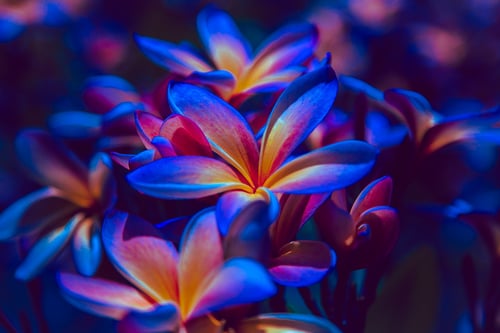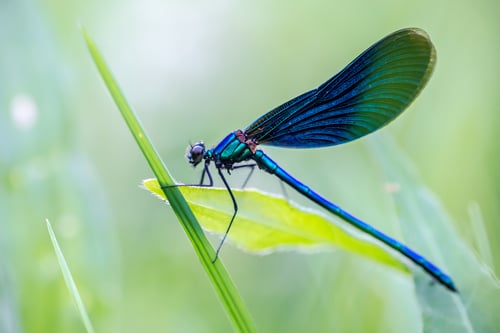Odds are that if you are reading this, you are using your sense of vision. In fact, 80% of the sensory information we take in at any given moment is obtained through our eyes. Most sight is created using rods and cones within the eye. Rods show us things in black and white, and cones allow us to see in color. Humans are able to see color using three types of cones (red, blue, and green), and can see colors on the spectrum from red to violet. However, the mechanisms behind sight are different for almost every species. A less well-known fact is that some of the most complex vision in the animal kingdom can be found in a group that many people are afraid of: insects! Insects have complex eyes, literally, which help them with flying, feeding, and recognizing their friends. My goal is to inspire appreciation for a group that is often an oversight (pun intended).

Honeeybees have an ability to see UV light (pictured above).
An insect that is common throughout most of the world is the honeybee. Honeybees, true to their names, produce honey by collecting pollen from wildflowers. But how do they know which flowers to go to? Honeybees, along with many other pollinators, have specialized vision that draws them to the flowers with their preferred pollen. Part of this is related to their ability to see UV light. Whereas humans see color on a spectrum from red to violet, bees see on a spectrum of orange to ultraviolet. This UV sight helps honeybees to see their flowers more clearly. Many wildflowers have evolved to have rings of UV light around their centers that are not visible to humans. For honeybees, the UV rings are a bright spotlight telling them exactly where they need to go.
Color is not the only way insect sight can be complex. One animal with the amazing ability to recognize their nest-mates is the paper wasp. Paper wasps are extremely social animals and their advanced sight helps them to distinguish individuals. They have facial recognition skills that are on par with that of humans. Each paper wasp has a slightly different pattern of black markings on their face and the wasps are able to recognize and remember individual differences. This adaptation allows them to determine which wasp is a member of their nest, and which is an invader.

Dragonflies (pictured above) have a 95% hunting success rate.
I mentioned earlier that humans see colors using three different cones, but what if I told you there was an insect that had thirty different cones? This is the case with some species of dragonflies, meaning they are able to see infinitely more colors than the human brain can comprehend. These insects have some of the most complex eyesight in the world, and it is invaluable to them in their day-to-day life. If I were to ask you which animal had the highest hunting success rate, you would probably answer lion, wolf, or hawk. But the answer is dragonfly. Dragonflies have a 95% hunting success rate and it is due in large part to their incredible eyes.
I hope this helped you to have a better appreciation for some of our six-legged friends. Insects and other bugs have a lot more skills than many people give them credit for. Next time you see a bug and think about squashing it, try to remember that they might be looking right back at you.
Miranda Shearer is a Naturalist at Walking Mountains Science Center and has recently moved to Colorado from Pennsylvania. She graduated from Bucknell University with a BS in Animal Behavior and a minor in Italian Studies. Miranda’s interest in bugs began with her pet Madagascar hissing cockroach, but her favorite insect is the leafcutter ant. She is a firm believer in relocating bugs from your house instead of killing them.







